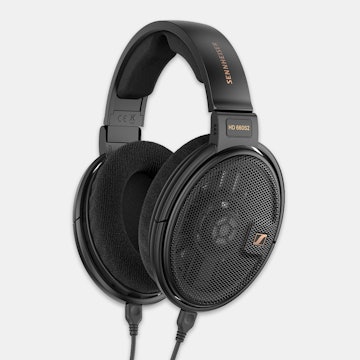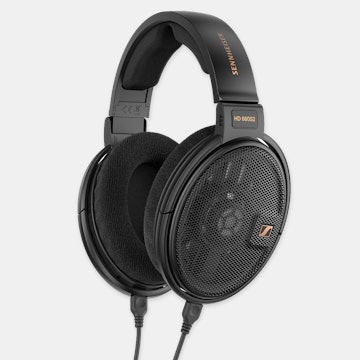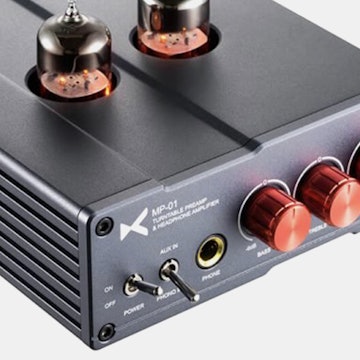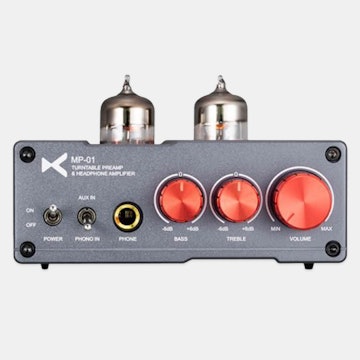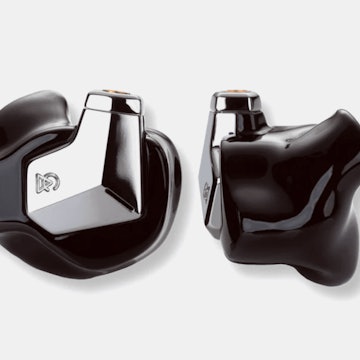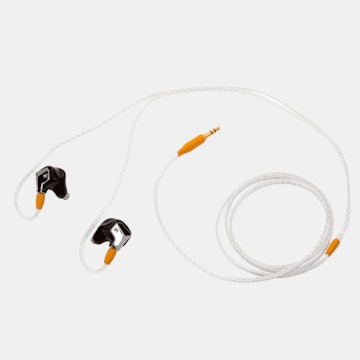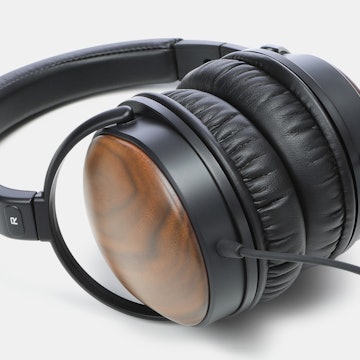Click to view our Accessibility Statement or contact us with accessibility-related questions











Showing 1 of 4 conversations about:
the_fritz
35
Apr 22, 2021
bookmark_border
Just to give you some first impressions while the drop is still active: I received my Xuelin H7 DAC/Amp today which I ordered a week ago on release day from China. Not much testing on sound quality done yet. Some infos w.r.t. to the discussed portability: it is not as big and hefty as you might think; see the comparison with other DAC/Amps below (obviously it is not a lightweight dongle either). It works really great and sounds very(!) good with the few headphones I tested it with. It turns on upon USB connection (in low gain mode). With two clicks you are in its party-trick mode: the automatic headphone resistance (impedance) test; that one is quite accurate (e.g. 121 Ohm measured for my HD560s with 120 Ohm officially) and changes the gain setting accordingly. Unfortunately this is also the _only way_ to change the gain (L,M,H) which is not the optimum for not-sensitive planars like my T50rp2 which lands at "mid" gain with its 48 Ohm but would benefit from high gain. The power of this DAC/Amp is however sufficient to drive those demanding planar headphones even from the single-ended port (definitely not to the full potential but still quite ok). Balanced output is much more powerful and I use e.g. the GL2000s (with 70 Ohm=Mid Gain) at -22dB balanced. Volume setting is highly accurate as well with 0.5dB increments. Android and Linux recognize it without problems and Win10 offers up to 384kHz/32bits. It runs a bit warm under load ... and very warm when charged and working as amp simultaneously. The (very small) display is nicer than I expected. Its body is not silver as one might think from the images but entirely black and the glass is definitively a fingerprint magnet. In my opinion it is well worth the price (if you do not need/want bluetooth)...
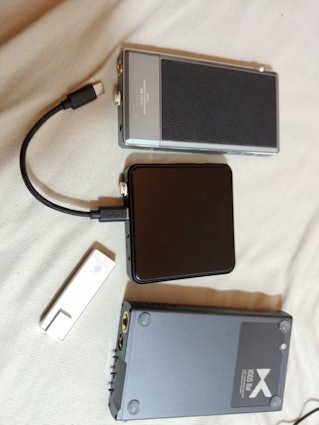
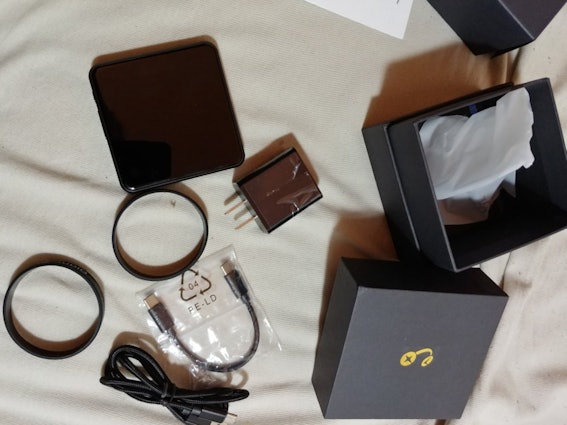
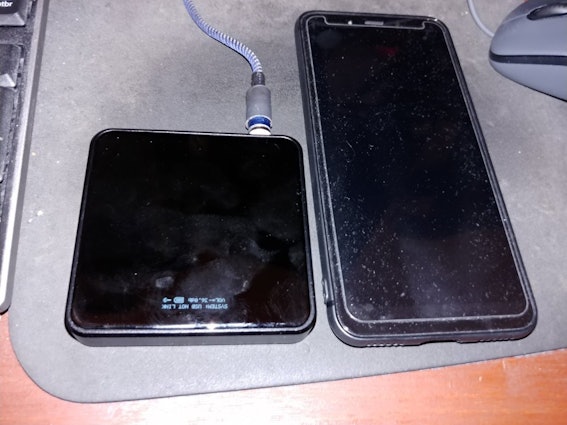



(Edited)
the_fritz
35
May 3, 2021
bookmark_border
samfoot89I do not know much about the drop JVC HA-FDX1 IEMs and especially I do not know what kind of improvement you are aiming for but I actually do not see the need for this powerful DAC/Amp for these IEMs. They seem to have a very low Impedance of 16 Ohms and a moderately high sensitivity of 103dB @1mW - there is thus not a big benefit to be expected from this DAC/Amp. I assume they run quite well from simpler (but well measuring) DAC (dongles) like the Tempotec Sonata HD PRO (=Hidizs S8), Hidizs S9, or even the ones from Apple and so on. I would recommend this specific DAC/Amp more for low-sensitivity / high-impedance headphones...
(Edited)
samfoot89
13
May 3, 2021
bookmark_border
the_fritzWell I've alrdy bought it haha, was playing with it, I've kinda realised that vocal got toned slightly down and a slightly better sound stage, not sure if this would even happen haha I might be wrong 😂
(Edited)
the_fritz
35
May 3, 2021
bookmark_border
samfoot89I agree that it opens the sound stage a bit with my IEMs as well - though I use them mostly from the balanced output. It is definitely one of the better "portable" DAC/Amps out there and provides sufficient power for very good control of bass and treble. If you want to use it (later) with more power hungry headphones you are also covered... It is also compatible with all my devices and always works without problems as USB-DAC. I would say you made a good choice ...
GLRTV
30
May 3, 2021
bookmark_border
samfoot89Any external DAC/AMP should be an upgrade over a mediocre internal one. For a low impedance IEM, I'd chose an amp with low output impedance, but unfortunately, that spec has not been published (I think). The HA-FDX1, being a single DD IEM, should not be too sensitive about the output impedance as other models with crossovers and multiple drivers (high output impedance can mess this up).
+1 about not needing this much power and the H7 a good choice for low sensitivity / high impedance headphones. Your headphone options are open tho, which is nice.
samfoot89
13
May 6, 2021
bookmark_border
the_fritzWhy is my bitrate at 95.999khz for tidal hifi or master and also same for Spotify. And sometimes it's at 47.999khz for both, you have any issue with this?
the_fritz
35
May 6, 2021
bookmark_border
samfoot89I did not encounter any issues with the sampling rates using my different devices and FLAC files, Qobuz("Studio"), UAPP and Spotify(Premium) - I do not use Tidal however. First of all, I would not put to much emphasis on the fractional part (x.999) of the sampling rates. As far as I know (I am not an audio engineer but have some basic knowledge on signal processing), the H7 has a relatively good internal asynchronous clock (SA9227 - actually two "clocks") in its USB signal chain which is quite accurately reproducing (or reclocking) the "true" sampling rates of the delivered input data stream by using integer number dividers (2 to the power of n) to get from its internal two independent(!) base frequencies of 45.1584 MHz and 49.152 MHz to 44.100 kHz and 48.000 kHz with a divider of 1024 and to 96 kHz with a divider of 512 and so on. This is already much better than most "portable" DACs do which are sometimes even up-scaling lower clock frequencies or using only one base frequency and thus causing much more jitter. I do not know, if the displayed value of the H7 itself is reflecting the input data correctly or is referring to the re-generated signal. However there is definitively some jitter or discrepancy in the input rates from your devices and maybe also an oscillator drift in the H7 (e.g. due to voltage offsets or temperature drifts and so on) which may lead to the displayed values. In my case I get sometimes slightly offset values on my Linux PC (e.g. 44.095 kHz or 95.999 kHz) or SpotifyAndroid phone (i.e. which has a fixed system audio output rate of slightly variable 47.999/47.998 kHz and so on). Using UAPP bitperfect output (which bypasses the systems audio re-sampling) I get e.g. 95.999 kHz for the 96kHz files/Qobuz-content on that same Android phone. My iPhone SE (where the iOS is not re-sampling USB audio) correctly delivers Spotify content with 44.1 kHz and Qobuz-HiRes data with the 95.999 kHz. Up to now each time I looked at the display values and from each device, the shown sampling rate matched very well (i.e. with a small fractional offset) the content of the stream/file if the respective system was using true bit perfect output and the system sampling rates of the devices otherwise. And of course it played it correctly. Depending on your source devices and their operating systems (e.g. Windows?), the system might use an output sampling rate which is not necessarily matching the content you play. Spotify for example is playing through the system layer and thus some (unwanted) resampling will take place (e.g. from 44.1 kHz stream content to 48 kHz or 96 kHz USB output - whatever your system is configured to). Thus - long story short - as far as I see it, the H7 is correctly handling the data rates and quite accurate in its "true" sampling and observed discrepancies are resulting from the handling of the USB audio sampling in the output of your source devices and their operating systems.
samfoot89
13
May 6, 2021
bookmark_border
the_fritzWhat about On the same device, switching from qobuz and to Spotify. I find it weird because I change from tidal to Spotify, and on Spotify it would remain 94.999khz.
the_fritz
35
May 6, 2021
bookmark_border
samfoot89I do not see this with my devices when switching the music applications. Again, I do not have Tidal and I do not know this exactly but I would guess that your operating systems USB audio output is set to 96 kHz (by Tidal(?)) and stays at that output rate when using spotify since spotify streams its data through the OS which has an output rate of whatever the system allows or is simply set to ... The stream of spotify is just resampled to that USB audio output rate you observe by the OS. I might be wrong however...
samfoot89
13
May 6, 2021
bookmark_border
the_fritzOkie thks tho, as I have no clue at all. Also is it normal to adjust headset ohm every time u connect? It will show
--- and I have to adjust manually
the_fritz
35
May 6, 2021
bookmark_border
samfoot89Yes that is normal... which is a pity - could have been done automatically when connecting in headphones (like in some LG phones with "quad DAC").
samfoot89
13
May 6, 2021
bookmark_border
the_fritzAh okie. I find that there's alot of flaws in the system. Battery won't show full etc. Sampling rate seems fine on pc when I adjust sampling rate, it's only on my phone it seems weird, I remember seeing 47khz on Spotify for kHz. But now it seems to be just at 98khz for Spotify 😅



